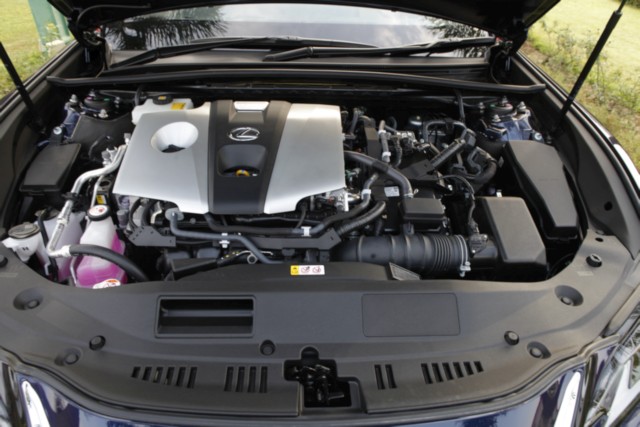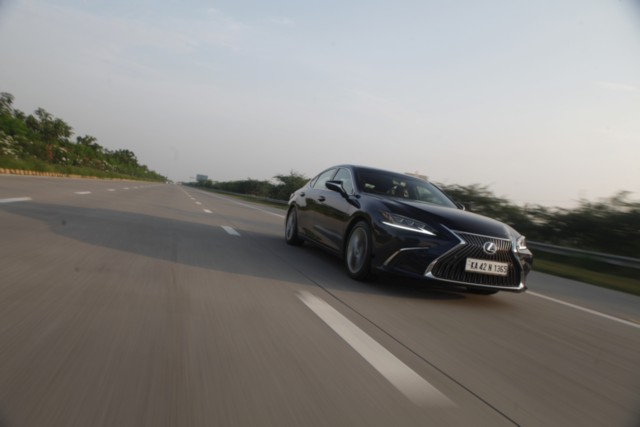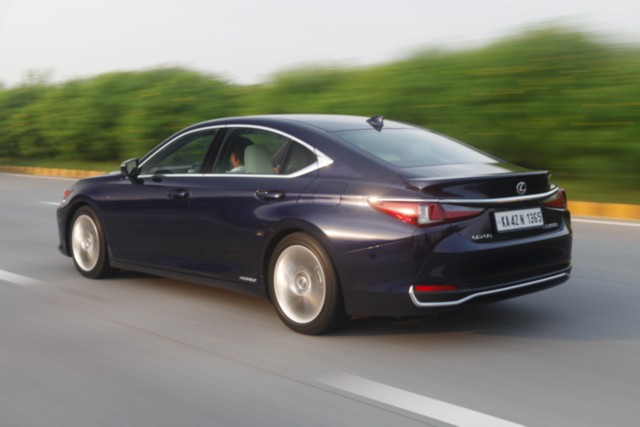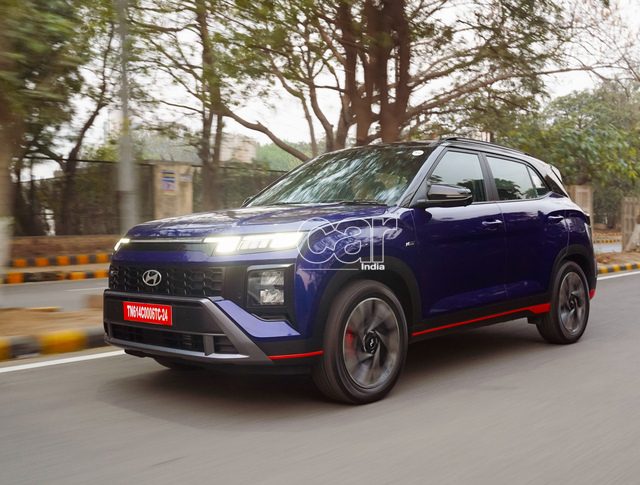
The powertrain is, in effect a further evolution of the Hybrid Synergy Drive system continually being refined by parent Toyota. The new Lexus ES 300h now has an equally new, fourth-generation Hybrid Drive System. Furthermore, the combustion engine, too, is not the same old unit. An all-new, 2.5-litre, four-cylinder, Atkinson-cycle petrol engine with dual injection has been developed. Although the displacement is identical, it now has a narrower bore and longer stroke for better high-speed combustion due to an optimised swirl pattern. As a result, the engine puts out 20 horses and 16 Nm more than its predecessor. That, paired to a new electric motor that’s more power-dense than before and puts out a healthy 120 PS-equivalent and 202 Nm of torque, means there is no shortage of potential. The combined output is now 218 PS, with a higher peak torque to accompany that as well. The eCVT, or electronically-controlled continuously variable transmission, funnels the amassed power to the front wheels.
Heading out through morning traffic was a relief, the sensation amplified by the relaxing driving position. The ergonomics are spot on and, even in Eco, the first of three drive modes, the response is more than adequate and the car glides along in pure electric mode. The range is just about a kilometre and a half before the engine kicks in at idle speed to generate the power needed to recharge the battery pack. Soon, I was doing 50 km/h and the heads-up display – which is quite huge and displays everything from the navigation and audio track, to the rev counter as well – showed just about 1,000 rpm. At 80 km/h, the engine was turning over at 1,500 rpm or so. Give it some foot, and the new 2.5 four purrs louder.

The revs climb to just over 5,500 rpm as peak torque from the engine is passed and peak power is settling in. The ES 300h feels brisk, but at full chat, despite its extensive sound dampening including the use of active noise cancellation, the engine is quite audible, even with the eCVT doing its best to belt out the power. However, again, some chauffeur would probably lose their job if their foot got too heavy too soon. Put that to rest and, regardless, speed is a given. Lexus claim a 0-100 km/h run of 8.9 seconds and a top speed of 180 km/h. It’s unhurried, yes. That’s the best way to put it across. The hybrid driveline essentially means it’s intended to be efficient, and it is. Lexus claim an efficiency of over 22 km/l overall, the real-time economy display came close to supporting that figure. Pushing it hard I saw 10.8 km/l. Feathering the throttle, with the engine half-burbling and e-motor working to help the 1.7-tonne ES cruise at a steady 80 km/h, I saw 30.4 km/l. The Auto Glide Control coasting function also helps conservation matters further.
Then there’s the equipment. The safety kit is substantial: 10 airbags, including two front knee airbags, and the credible braking nannies for drama-free, sure-footed braking. The motion-activated power-tailgate gives access to a 454-litre boot, enough for a family load of baggage for a weekend getaway, or for a variety of sports equipment, whatever it may be. The rear centre seat-back opens up to accommodate even longer objects. Practicality is not something the ES is short on. Then, there’s the price.
At around Rs 60 lakh, the ES 300h is a premium executive challenger that has the styling to stare down a BMW 5er, with space and comfort to rival the Mercedes E-Class. It all comes down to which seat you would be spending more time in. The Lexus ES 300h is modern design statement with old-school comfort that prioritizes the occupant’s surroundings above a quick sprint and stiff cornering. There’s no diesel model and the petrol-hybrid is all there is. Again, if there ever was a brand standing as a hallmark to certain beliefs, it’s Lexus. The phrases “greater than the sum of its parts” and “not just on paper” are exactly what I’m on about. You need to spend time in one before it begins to make sense. It’s how they manage to be smooth while looking sharp.

Need to Know – Lexus ES 300h
Price: Rs 59.13 lakh (ex-showroom)
Engine: 2,487 cc, in-line four, Atkinson-cycle, direct and port injection, petrol
Max Power: 178 PS @ 5,700 rpm
Max Torque: 221 Nm @ 3,600-5,200 rpm
E-motor: Permanent magnet motor generator
Max Output: 88 kW (120 PS), 202 Nm
Battery Pack: 204-cell, 244.8-volt, NA kWh, Nickel-metal Hydride
Net Peak Output: 160 kW (218 PS), 320 Nm (estimated)
Weight: 1,680 kg




